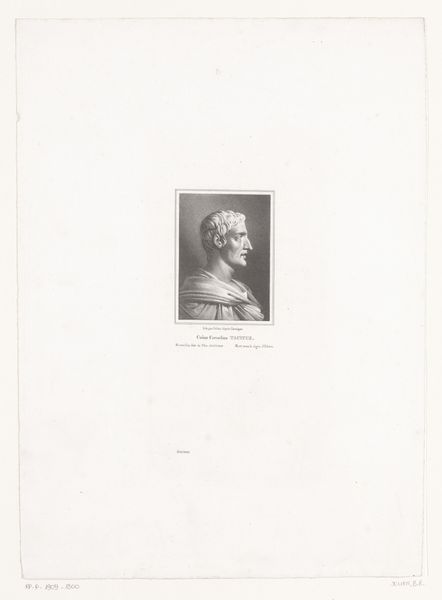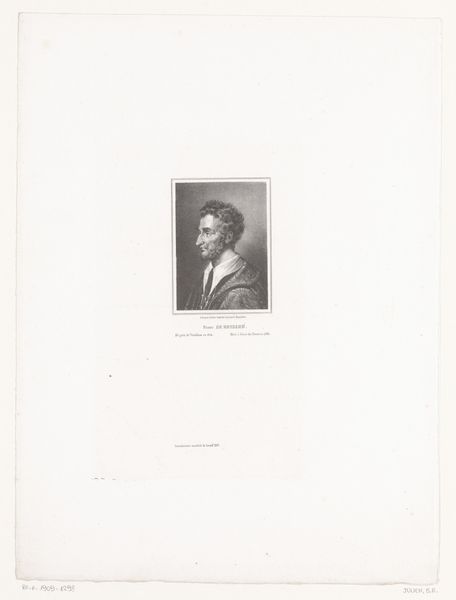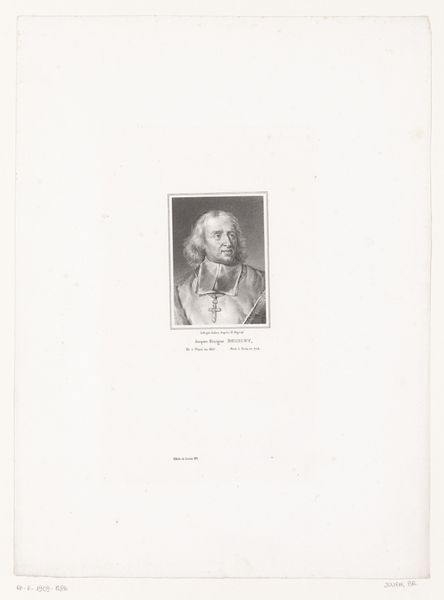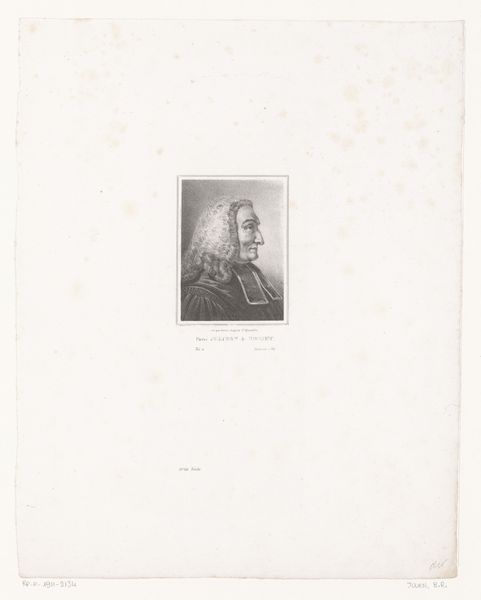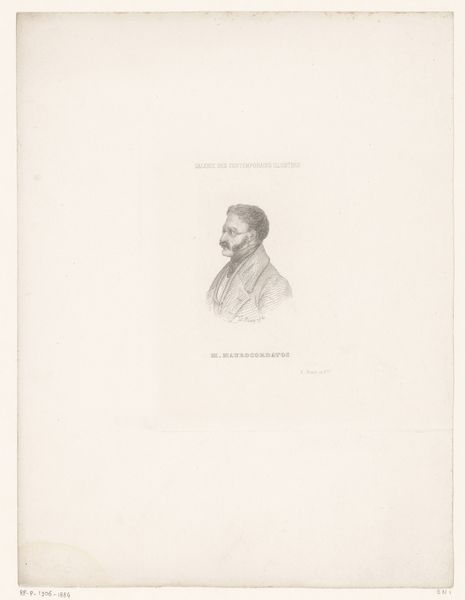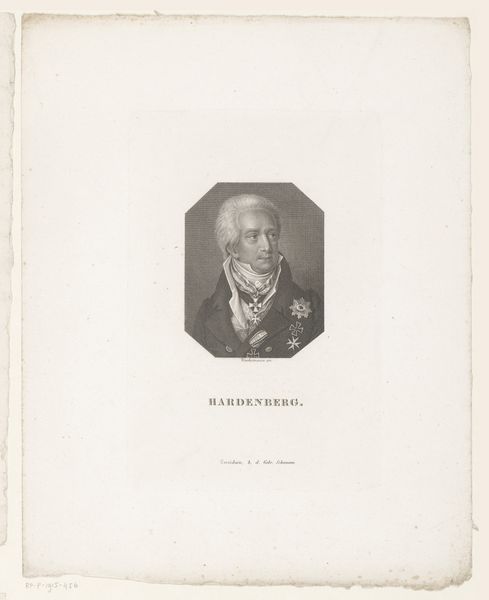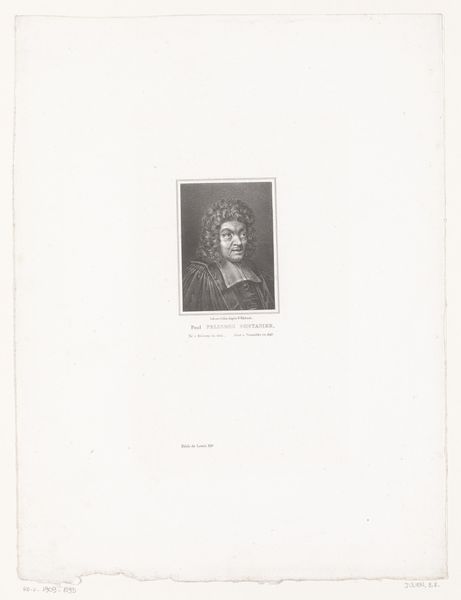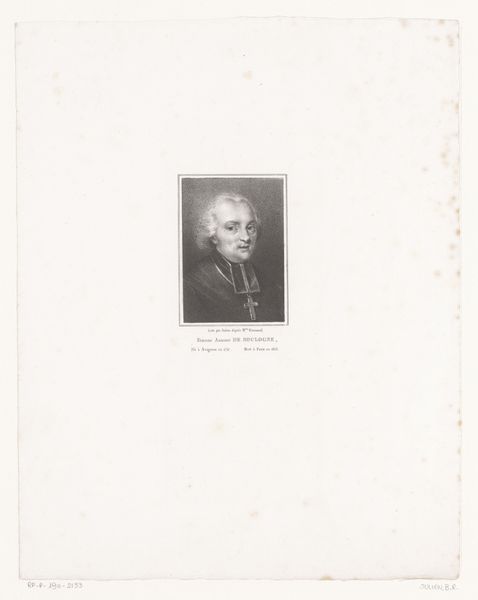
print, engraving
#
portrait
#
neoclacissism
# print
#
old engraving style
#
engraving
#
realism
Dimensions: height 331 mm, width 243 mm
Copyright: Rijks Museum: Open Domain
Bernard Romain Julien rendered this portrait of Homer, likely in the mid-19th century, using engraving. The laurel wreath crowning Homer's head speaks volumes. In ancient Greece, this symbol honored victors, poets, and heroes, signifying triumph and immortality. But let us delve deeper into this motif. We find it echoing through time, adorning Apollo, god of light and poetry. In the Renaissance, Dante, too, was depicted crowned with laurel, linking him to the classical tradition. Yet, the meaning subtly shifts. Homer’s laurel represents the eternal power of storytelling and cultural memory, which carries an emotional weight. Consider how the image of the laureate head evokes feelings of reverence and a connection to the past. The symbol carries a non-linear, cyclical progression. It resurfaces, evolves, and takes on new meanings in different historical contexts.
Comments
No comments
Be the first to comment and join the conversation on the ultimate creative platform.
